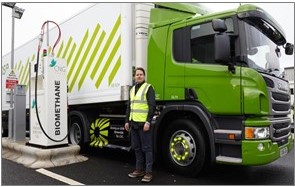Information Sheet 44: Emissions reduction the bioenergy and biofuels sector can achieve by 2050
|
Currently 11% of consumer energy is supplied from biomass. Including only process heat and use of waste this could increase to 15% by 2050 and reduce net greenhouse gas emissions by 3.6%, but with biofuels use by heavy transport this could increase to 27% energy with 15% reduced greenhouse gas emissions. |
The use of biomass to produce process heat instead of fossil fuels is based on technology that is well proven and readily available. There is adequate biomass throughout New Zealand that can be combusted to produce process heat to allow a theoretical 100% replacement of coal and some gas fuel. 60% of the biomass fuel to replace coal can be sourced from current plantation forestry operations and the remainder from new forest planting, farm forestry, energy crops such as miscanthus, organic municipal and industrial waste, and use of currently unused agricultural biomass such as stover and straw. Treatment of biomass so that it can be cofired in existing coal plant requires some research but internationally is already proven. This assumes that some existing low temperature process heat will also be sourced from electricity-based equipment such as heat pumps.
 Municipal Waste Treatment Facilities, which use anaerobic digester technology, process sewage and liquid trade waste into biogas and biosolids both of which can be used as a fuel. Food waste from communities can also be treated in an aerobic digester but in this case the resulting digestate can be used directly as a high-quality pathogen free fertiliser onto land. In both applications the treatment of organic waste reduces disposal to landfill and subsequent discharge of methane, a greenhouse gas, which would otherwise occur. The biogas can be used to generate electricity, produce heat, used as biomethane as a vehicle fuel and a feedstock for manufacture of bio-based.
Municipal Waste Treatment Facilities, which use anaerobic digester technology, process sewage and liquid trade waste into biogas and biosolids both of which can be used as a fuel. Food waste from communities can also be treated in an aerobic digester but in this case the resulting digestate can be used directly as a high-quality pathogen free fertiliser onto land. In both applications the treatment of organic waste reduces disposal to landfill and subsequent discharge of methane, a greenhouse gas, which would otherwise occur. The biogas can be used to generate electricity, produce heat, used as biomethane as a vehicle fuel and a feedstock for manufacture of bio-based.
